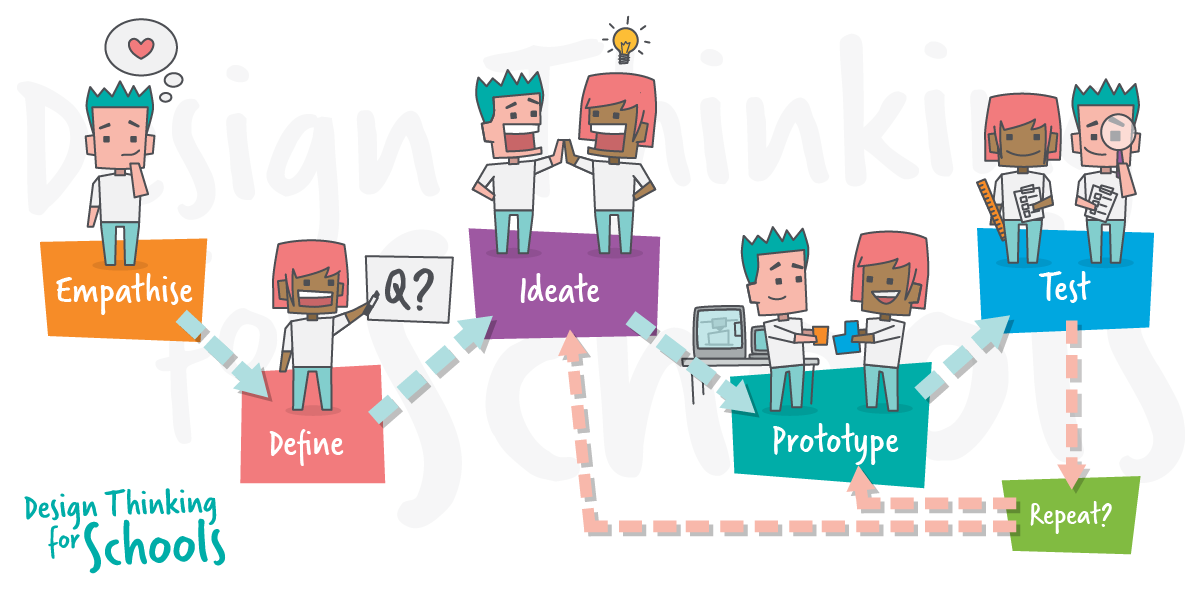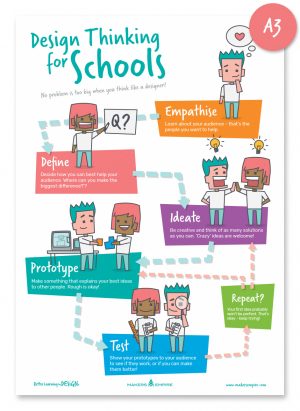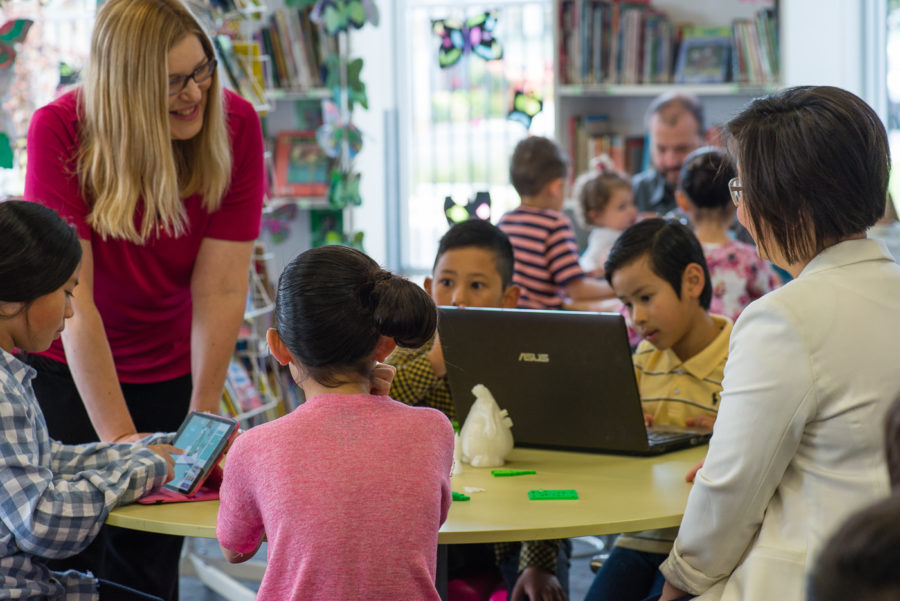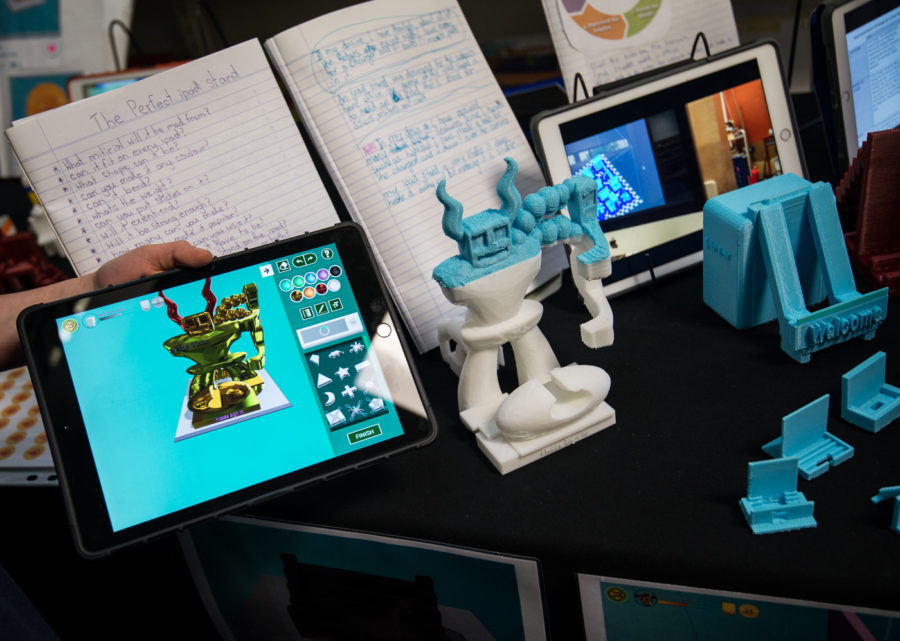In this post, Mandi Dimitriadis, Director of Learning at Makers Empire, will help you understand more about Design Thinking. You’ll get to know what Design Thinking is, why Design Thinking is important, the phases of the Design Thinking process and how you might teach your students how to use Design Thinking to reframe problems and needs as actionable statements.
Designers use particular ways of thinking to create innovative new products and design solutions to challenging problems. As educators, we can learn a lot from the way designers think.
What is Design Thinking?
- A solutions-based approach to solving problems.
- An iterative, non-linear process.
- A way of thinking and working.
- Supported by a collection of strategies and methods.
- Develop empathy and understand the needs of the people we are designing solutions for.
- Define problems and opportunities for designing solutions.
- Generate and visualise creative ideas.
- Develop prototypes.
- Test solutions and seek feedback.
Why is Design Thinking important?
Consider the rapidly changing world we live in. To thrive in the future students will need to be adaptable and flexible. They will need to be prepared to face situations that they have never seen before. Design Thinking is one of the best tools we can give our students to ensure they:
- Have creative confidence in their abilities to adapt and respond to new challenges.
- Are able to identify and develop innovative, creative solutions to problems they and others encounter.
- Develop as optimistic, empathetic and active members of society who can contribute to solving the complex challenges the world faces.
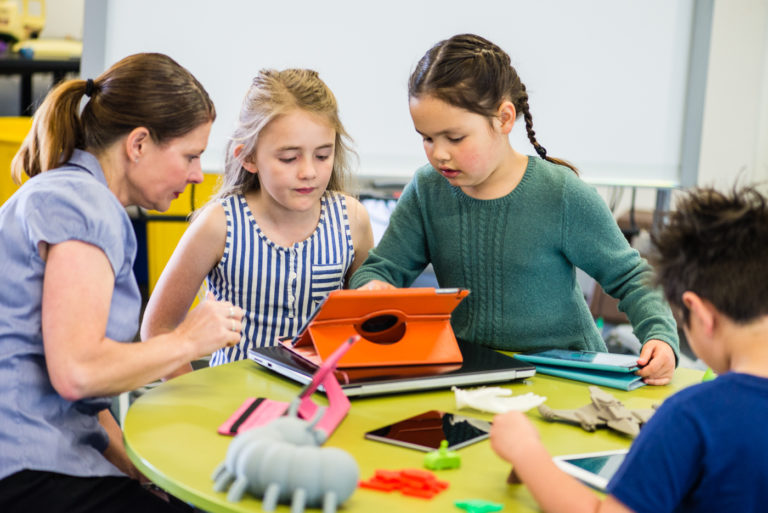
How can students use Design Thinking?
So what does Design Thinking look like in action?
Watch these inspiring videos made by schools in Australia showing how students used Design Thinking and Makers Empire to solve common real-world problems in their classroom, school and communities.
Please note that the Makers Empire app depicted in this video is a much earlier version of the app.
How did the students in the videos use Design Thinking?
In the Forbes primary school bag tag video, for example, we saw our first graders:
- Developing and agreeing on criteria for their designs.
- Selecting tools and materials – in this case, Makers Empire and 3D printing.
- Supporting each other to learn how to use the new tools.
- Producing a working prototype.
The testing process for our first graders involved:
- Giving each other feedback
- Assessing their designs against the previous agreed criteria
- Making modifications and improvements to their designs
- Testing their designs in the context they would be used.
- Reflecting on their problem-solving processes and learning outcomes.
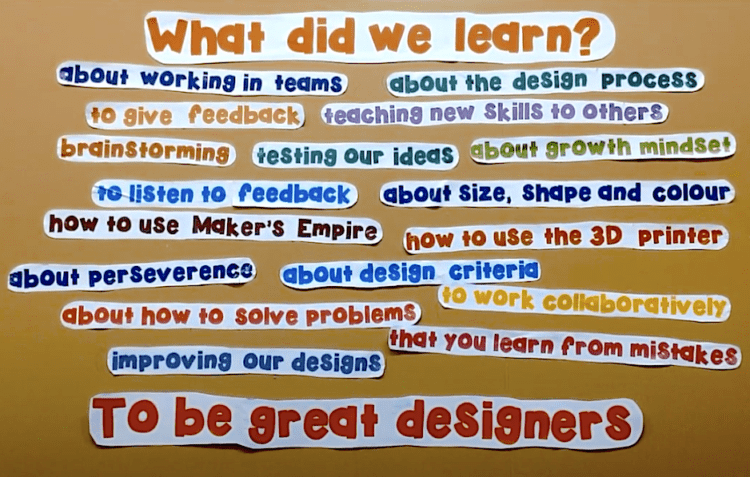
How can we teach Design Thinking with little time to plan?
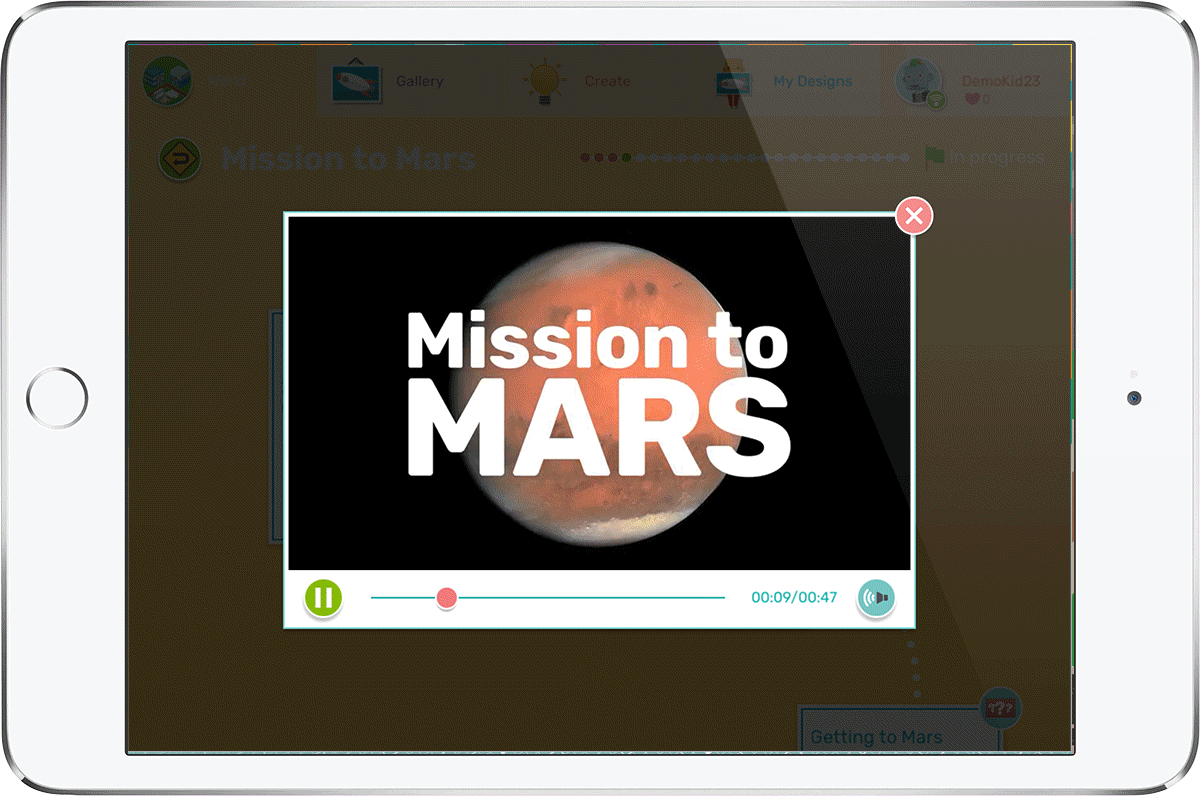
Makers Empire teachers never cease to impress us with their innovative and creative ideas for using Makers Empire to help students achieve curriculum learning outcomes. However, we also know how busy teachers are and how difficult it can be to find time to plan engaging, curriculum-aligned units of work. So we created ready-made Challenge Courses.
Each themed course is a complete design program comprising videos, quizzes, tutorials & design challenges. Challenge Courses are aligned to curriculum outcomes and teach real world-problem solving using Design Thinking. Challenge courses take 4-10 weeks to complete so teachers might plan to have students do a course during one lesson/week over a term. During that term, students will address all aspects of the Design and Technologies curriculum without teachers needing to do any extra planning.
How can we learn more about Design Thinking?
Makers Empire offers customisable Design Thinking and 3D design learning programs to school districts, education departments, and groups of schools.
Through our professional learning programs, teachers learn how to use Design Thinking and 3D design to transform the way they teach STEM subjects and help equip students with the skills and attitudes they’ll need to thrive in the future.
We’ve delivered Design Thinking and 3D technology programs to groups of 200+ schools in Australia, America and the Middle East so we have the right experience, skills and team to help you.

How will you teach Design Thinking?
Now it’s your turn. Think about projects you can do with your students that will help enhance and deepen learning. How might you support your students to:
- Develop empathy, insights and understandings.
- Define a problem as an actionable question.
- Generate and visualise ideas.
- Develop prototypes; and
- Evaluate and test their designed solutions.
Makers Empire is an excellent way to teach Design Thinking to students. You can sign up for a free school trial at the top of this website. Don’t forget to download our free Design Thinking posters and worksheets, too.

Mandi Dimitriadis
Mandi Dimitriadis, DipT. is a highly respected educator and speaker who works internationally with elementary, primary and middle schools to help teachers develop Design Thinking, embrace maker pedagogy and cover Design & Technology Curriculum. She is an experienced classroom teacher who recognises the power of technology to enhance teaching and improve educational outcomes. Mandi has extensive experience with curriculum development, having previously developed programs for the Australian Government’s Department of Education.
How to Enhance Design Thinking with ChatGPT
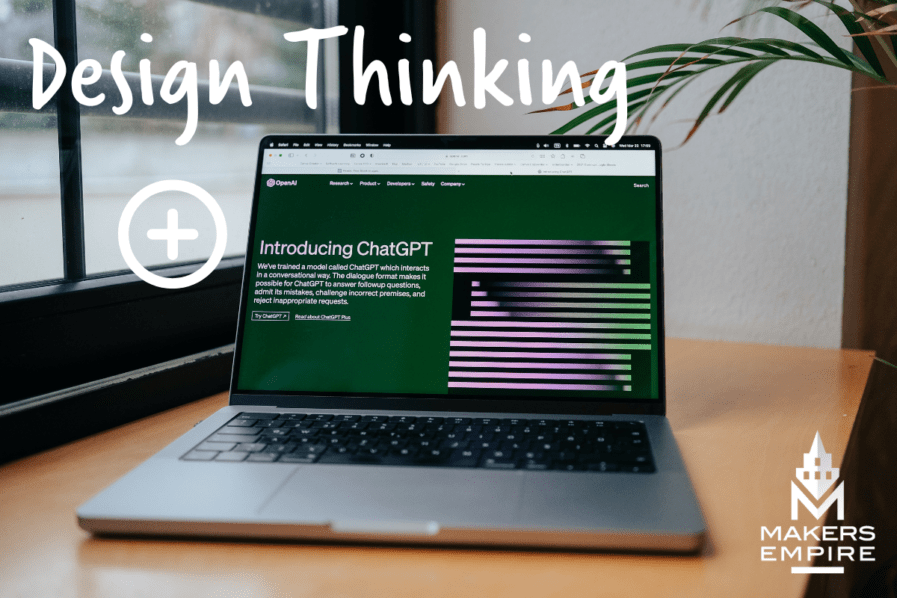
New technologies are always posing challenges in the educational sector. It’s not the technology that’s the issue, but the people and processes. Educators’ approaches to these digital advancements must not be to deny their existence but to understand how they can be used to transform assessment. AI tools, such as ChatGPT, offer students access to a wealth of information and can be most useful as research and practice guides in active and applied problem-solving tasks such as those used in design thinking.
So how can teachers embrace ChatGPT and use it to enhance design thinking approaches?
ChatGPT is capable of facilitating the generation of novel ideas, enhancing creativity and improving product development (Haleem, 2022). It can reinforce the principles of design thinking through its ability to generate student centred solutions with its iterative problem solving approach (Enhold, 2022). For each of the phases in design thinking, ChatGPT can be a useful tool.

